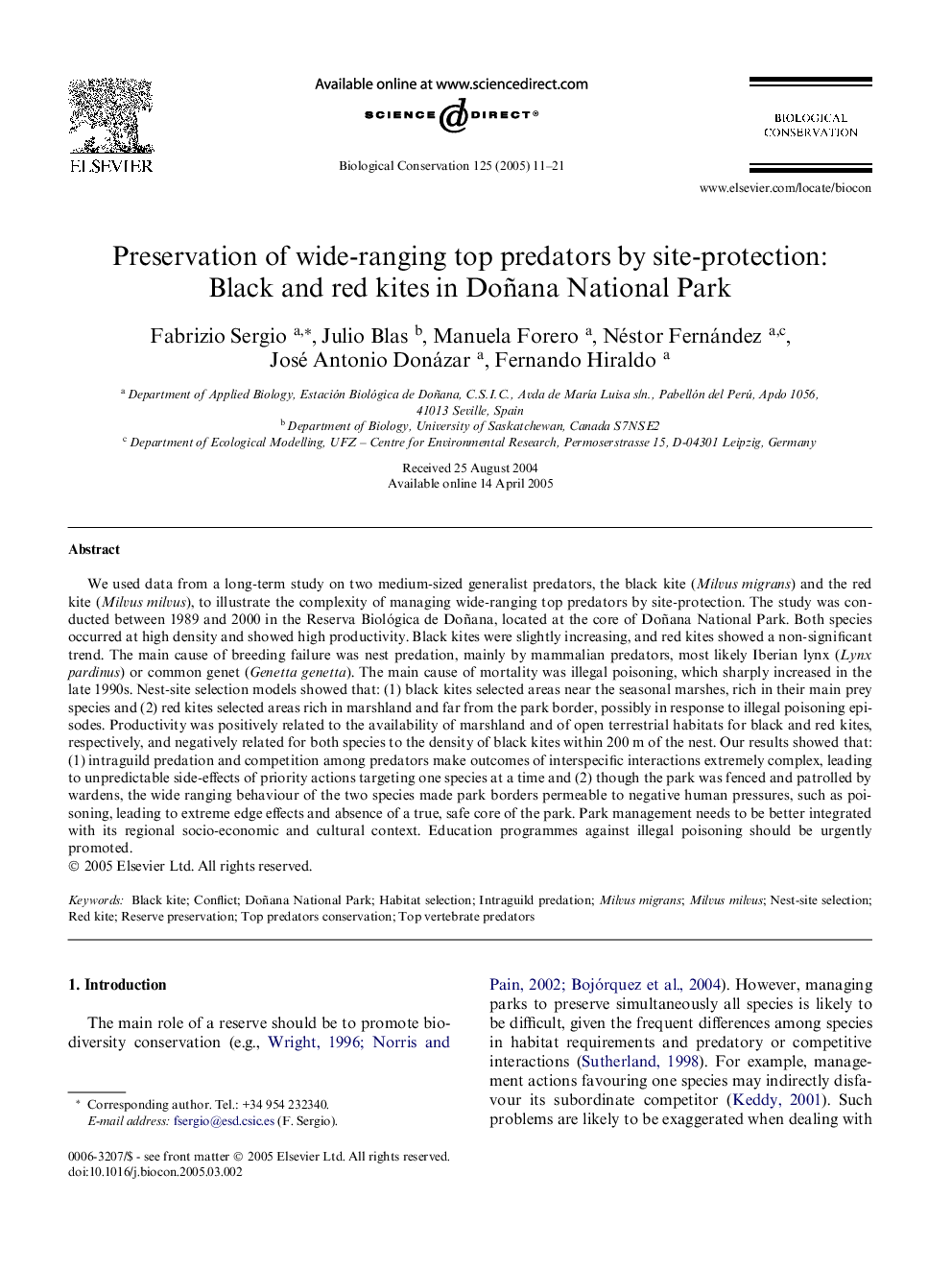| کد مقاله | کد نشریه | سال انتشار | مقاله انگلیسی | نسخه تمام متن |
|---|---|---|---|---|
| 9446142 | 1304651 | 2005 | 11 صفحه PDF | دانلود رایگان |
عنوان انگلیسی مقاله ISI
Preservation of wide-ranging top predators by site-protection: Black and red kites in Doñana National Park
دانلود مقاله + سفارش ترجمه
دانلود مقاله ISI انگلیسی
رایگان برای ایرانیان
کلمات کلیدی
موضوعات مرتبط
علوم زیستی و بیوفناوری
علوم کشاورزی و بیولوژیک
بوم شناسی، تکامل، رفتار و سامانه شناسی
پیش نمایش صفحه اول مقاله

چکیده انگلیسی
We used data from a long-term study on two medium-sized generalist predators, the black kite (Milvus migrans) and the red kite (Milvus milvus), to illustrate the complexity of managing wide-ranging top predators by site-protection. The study was conducted between 1989 and 2000 in the Reserva Biológica de Doñana, located at the core of Doñana National Park. Both species occurred at high density and showed high productivity. Black kites were slightly increasing, and red kites showed a non-significant trend. The main cause of breeding failure was nest predation, mainly by mammalian predators, most likely Iberian lynx (Lynx pardinus) or common genet (Genetta genetta). The main cause of mortality was illegal poisoning, which sharply increased in the late 1990s. Nest-site selection models showed that: (1) black kites selected areas near the seasonal marshes, rich in their main prey species and (2) red kites selected areas rich in marshland and far from the park border, possibly in response to illegal poisoning episodes. Productivity was positively related to the availability of marshland and of open terrestrial habitats for black and red kites, respectively, and negatively related for both species to the density of black kites within 200 m of the nest. Our results showed that: (1) intraguild predation and competition among predators make outcomes of interspecific interactions extremely complex, leading to unpredictable side-effects of priority actions targeting one species at a time and (2) though the park was fenced and patrolled by wardens, the wide ranging behaviour of the two species made park borders permeable to negative human pressures, such as poisoning, leading to extreme edge effects and absence of a true, safe core of the park. Park management needs to be better integrated with its regional socio-economic and cultural context. Education programmes against illegal poisoning should be urgently promoted.
ناشر
Database: Elsevier - ScienceDirect (ساینس دایرکت)
Journal: Biological Conservation - Volume 125, Issue 1, September 2005, Pages 11-21
Journal: Biological Conservation - Volume 125, Issue 1, September 2005, Pages 11-21
نویسندگان
Fabrizio Sergio, Julio Blas, Manuela Forero, Néstor Fernández, José Antonio Donázar, Fernando Hiraldo,